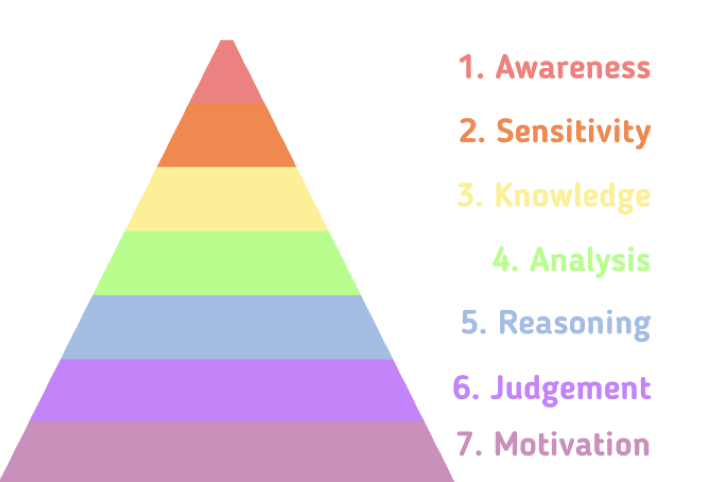These graduate attributes are based on an Ethics Learning Taxonomy that explains WHY we want to teach engineering ethics: these descriptors link to mindsets, knowledge, skills, and attributes required of the 21st century engineer. They are derived from theories of moral development articulated by scholars such as James Rest and Lawrence Kohlberg. These attributes may be most useful for those who are seeking to embed ethics across an entire programme or curriculum, although individual educators could also intentionally integrate different elements throughout a course or module.

The colours used here across the learning outcomes and their associated ideas are based on Bloom’s taxonomy, a system developed to provide a common language for teachers to discuss and exchange learning and assessment methods. Educators use Bloom’s taxonomy to encourage higher-order thought in their students by building up from lower-level cognitive skills.
The traditional version of Bloom’s taxonomy uses six colours and tiers; we have added one more to include motivation.
Level 1 – Awareness
Level 2 – Sensitivity
Level 3 – Knowledge
This Explorer was built to help you navigate the landscape of engineering ethics education. Choose a path depending on what you want to do: each path leads you through content such as learning outcomes, graduate attributes, and accreditation criteria, while also pointing you to supporting activities and resources linked to the content. Find your way using the map at top right or by navigating to the links in the menu bar.
Level 7 – Motivation